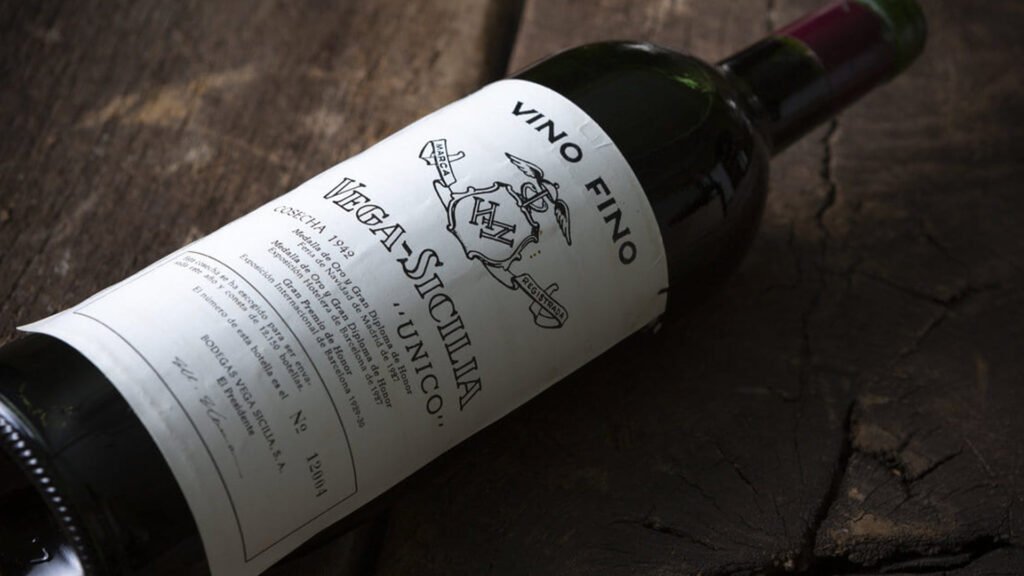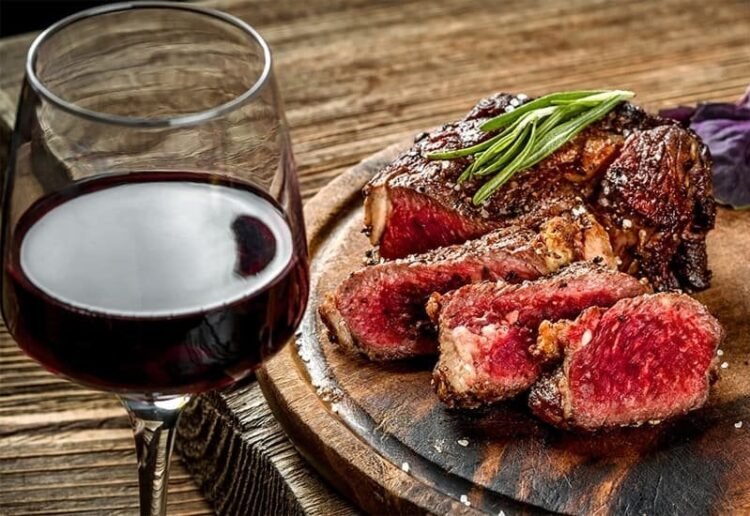Vega Sicilia is a name that resonates with wine lovers, collectors, and connoisseurs alike, known for producing some of the most prestigious and sought-after wines globally. Located in Spain’s Ribera del Duero region, Vega Sicilia’s wines are synonymous with excellence, blending centuries of tradition with modern innovation. As a leader in the fine wine world, its brand story is one of vision, legacy, and global influence, marking it as a true symbol of Spanish luxury and refinement.
This article delves into the rich history of Vega Sicilia, from its humble beginnings to its rise as a global icon of fine winemaking. It explores how the estate’s legacy has shaped the modern wine world, the pioneering individuals behind its evolution, and how the brand continues to stand at the forefront of the Spanish wine revolution.
1. The Origins of Vega Sicilia: A Visionary Beginning
Vega Sicilia’s story begins in 1864 when it was founded by Don Eloy Lecanda y Chaves, a Spanish nobleman with a passion for winemaking. His vision was to create a wine that could rival the best Bordeaux wines of the time, combining the classic varieties of Tempranillo (locally known as Tinto Fino) with Bordeaux’s famed grapes, such as Cabernet Sauvignon, Merlot, and Malbec. Don Eloy’s innovative spirit laid the foundation for what would become one of the most respected and influential wine estates in the world.
The Early Days: From Local to Legendary
When Don Eloy established Vega Sicilia, he had a vision of producing wines with remarkable aging potential, capable of competing with the finest in Europe. At the time, the Ribera del Duero region was still relatively unknown as a prime wine-producing area. The area’s harsh continental climate, with its scorching summers and cold winters, along with its unique terroir of clay and chalk soils, proved to be perfect for growing high-quality grape varieties, especially Tempranillo.
Vega Sicilia’s early wines were primarily intended for local Spanish nobility, but it wasn’t long before its exceptional quality began to draw attention far beyond the country’s borders. By the late 19th century, Vega Sicilia had made a name for itself as one of Spain’s premier wineries, known for producing wines of extraordinary character and depth.
The 20th Century: A Pivotal Transition
Despite its early success, the 20th century was a period of significant transition for Vega Sicilia. The winery’s ownership passed through various hands during this time, with one of the most notable being the renowned Spanish businessman, Vicente Alvarez. Under his stewardship in the 1980s, Vega Sicilia began its transformation into a global brand.
In 1982, the Alvarez family acquired the estate, and their influence would reshape the future of Vega Sicilia. The Alvarez family, known for their deep knowledge of the wine industry, invested heavily in the estate’s development. They modernized the winemaking process while respecting the estate’s historical roots, ensuring that Vega Sicilia’s wines maintained their unique identity and quality.
2. The Rise to Global Recognition: Innovation Meets Tradition
The legacy of Vega Sicilia is built on a delicate balance between tradition and innovation, a philosophy that has allowed the winery to remain a leader in the world of fine wine. Under the guidance of the Alvarez family, the estate has successfully navigated the changing landscape of the wine industry while staying true to its core values of craftsmanship, consistency, and excellence.
A Commitment to Quality and Craftsmanship
Vega Sicilia’s winemaking philosophy is rooted in respect for the land and the pursuit of perfection. Every aspect of production is meticulously managed, from the cultivation of the vineyards to the aging process in oak barrels. The estate uses a combination of French and American oak to age its wines, allowing for the complex flavors and aromas that have become synonymous with Vega Sicilia.
One of the winery’s most distinctive features is its commitment to long aging periods. Wines like Vega Sicilia Único are aged for several years before release, allowing them to develop an extraordinary depth of flavor. These wines are known for their incredible longevity, with some bottles continuing to improve with decades of aging. This focus on aging potential and quality has garnered Vega Sicilia a reputation for producing wines that not only compete with the finest Bordeaux and Burgundy but often surpass them in terms of complexity and elegance.
Expansion and Innovation: Embracing the Future
In addition to its flagship wine, Vega Sicilia has diversified its portfolio over the years. The estate now produces several wines, each with its own unique expression of the Ribera del Duero terroir. The most notable is Vega Sicilia Único, the winery’s crown jewel, a blend of Tempranillo and Cabernet Sauvignon known for its incredible depth and complexity. Another significant wine is Valbuena 5°, made from younger vines, which offers a slightly more accessible yet equally refined style of wine.
The Alvarez family also introduced the brand’s international expansion. By the late 1980s and early 1990s, Vega Sicilia wines had entered key markets such as the United States, the United Kingdom, and Japan, establishing a global presence that was cemented by the brand’s association with luxury, exclusivity, and fine craftsmanship.
3. Vega Sicilia’s Impact on Spanish Wine: Elevating Ribera del Duero
While Vega Sicilia’s rise to global prominence began with its wines, the estate’s influence reaches far beyond just its own production. The winery’s success helped elevate Ribera del Duero as a premier wine region, showcasing its potential on the international stage and encouraging other producers to adopt higher standards of winemaking.
Pioneering Ribera del Duero’s DO Status
Before the establishment of the Ribera del Duero Denomination of Origin (DO) in 1982, the region was not widely known as a fine wine-producing area. However, Vega Sicilia’s success story played a critical role in the creation of the DO, as its wines garnered international attention and sparked a wave of interest in the region’s unique terroir.
Vega Sicilia’s early achievements proved that Ribera del Duero could produce wines of exceptional quality, rivaling the finest Bordeaux and Burgundy. Today, the Ribera del Duero DO is recognized as one of the top wine-producing regions in Spain, with Vega Sicilia at the heart of this transformation.
Influence on the Spanish Wine Industry
Vega Sicilia’s rise to fame was instrumental in reshaping the Spanish wine industry, helping to shift the focus from large-scale, industrial production to more quality-driven, terroir-focused winemaking. Vega Sicilia’s wines have set a benchmark for Spanish winemakers, demonstrating that the country’s wines could be world-class and rival the best in Europe.
The success of Vega Sicilia also paved the way for other producers in Ribera del Duero and beyond, encouraging a generation of winemakers to invest in quality, long-aging wines that would reflect the unique characteristics of their respective terroirs. This movement helped position Spain as a serious contender in the global fine wine market.

4. Iconic Wines of Vega Sicilia: Masterpieces of Winemaking
Vega Sicilia’s portfolio is widely regarded as one of the most prestigious in the world. The winery’s commitment to producing wines of exceptional quality is evident in each of its offerings. The wines of Vega Sicilia are renowned for their complexity, aging potential, and depth of flavor, making them some of the most sought-after bottles on the market.
Vega Sicilia Único: The Crown Jewel
Vega Sicilia Único is the estate’s flagship wine, often regarded as one of the greatest wines in the world. This blend of Tempranillo and Cabernet Sauvignon, with small additions of Merlot and Malbec in certain vintages, is known for its incredible complexity, balance, and aging potential. Each vintage of Único is different, reflecting the unique conditions of that year’s harvest, but all share a signature profile of dark fruit, spices, leather, tobacco, and earthy notes. It is a wine that improves with age, and many collectors view it as a true investment.
Valbuena 5°: A More Accessible Expression
Valbuena 5° is another key wine from the Vega Sicilia estate. Made from younger vines and aged for a shorter period than Único, Valbuena 5° is a more approachable wine, offering a fresher, fruit-driven profile while maintaining the estate’s hallmark elegance. The wine is typically released five years after the harvest, showcasing the estate’s commitment to quality and its ability to create wines that are accessible yet still refined.
Pintia: Expanding the Vega Sicilia Legacy
In addition to its wines from Ribera del Duero, Vega Sicilia has expanded its reach with the creation of Pintia, a wine from the Toro DO region. This wine, made primarily from Tinta de Toro (a variant of Tempranillo), is a more intense and powerful expression, reflecting the hot and dry conditions of the Toro region. Pintia has become a key part of Vega Sicilia’s portfolio, further enhancing the brand’s global presence.
5. The Legacy of Vega Sicilia: An Enduring Influence
Vega Sicilia’s brand is not only a symbol of quality and luxury, but also of tradition, innovation, and sustainability. The estate’s dedication to preserving the land and producing wines that reflect the essence of Ribera del Duero ensures that Vega Sicilia will remain at the top of the fine wine world for years to come.
Conclusion: A True Spanish Icon
Vega Sicilia’s remarkable journey from a small estate in Ribera del Duero to a global icon is a testament to the winery’s commitment to excellence. Through vision, innovation, and respect for tradition, Vega Sicilia has carved out a legacy that continues to influence the world of fine wine. As the winery moves forward, its continued success will undoubtedly inspire future generations of win emakers, collectors, and wine lovers to appreciate the artistry and craftsmanship that define this legendary Spanish brand.































